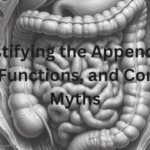Cellular respiration
Oxidative phosphorylation is the final stage of cellular respiration, in which energy is released from food molecules and used to produce ATP, the cell’s main energy currency. It happens in the mitochondria, which is known as the “cellular energy powerhouse.” ATP stands for Adenosine Triphosphate. It is often referred to as the “energy currency” of cells because it carries and supplies the energy needed for various cellular processes.
Oxidative phosphorylation consists of two main stages: the electron transport chain and chemiosmosis. The electron transport chain is a series of proteins that shuttle electrons from food molecules to oxygen. During this process, energy is freed up and utilized to push protons across the mitochondrial membrane. Chemiosmosis is the process by which the energy from the proton gradient is used to synthesize ATP.
Oxidative phosphorylation is a very efficient way of producing ATP, and it is responsible for generating most of the ATP in the cell. It is essential for life, and any defects in oxidative phosphorylation can lead to serious health problems. Amino acids are the fundamental building blocks of proteins, which are crucial for various physiological functions in the body.
The Electron Transport Chain
The electron transport chain (ETC) is a series of proteins embedded in the inner membrane of the mitochondria. It is the final stage of cellular respiration, in which energy is released from food molecules and used to produce ATP, the cell’s main energy currency.
The ETC works by passing electrons from one protein to another. As the electrons move through the chain, they lose energy, which is used to pump protons (hydrogen ions) across the inner mitochondrial membrane. This creates a concentration gradient of protons, with more protons on the outside of the membrane than on the inside.
The energy from the proton gradient is used to drive the synthesis of ATP from ADP and inorganic phosphate. This process is called chemiosmosis.
The ETC is a very important part of cellular respiration, and it is responsible for generating most of the ATP in the cell. It is essential for life, and any defects in the ETC can lead to serious health problems. The benefits of fluoride include strengthening tooth enamel, preventing tooth decay, and promoting overall dental health.
Chemiosmosis
Chemiosmosis is a process that uses the energy of a proton gradient to produce ATP, the cell’s main energy currency. It occurs within the mitochondria, known as the cellular energy hub.
In chemiosmosis, protons (hydrogen ions) are pumped across the inner mitochondrial membrane by the electron transport chain. This creates a concentration gradient of protons, with more protons on the outside of the membrane than on the inside.
The energy from the proton gradient is used to drive the synthesis of ATP from ADP and inorganic phosphate. This happens through a protein called ATP synthase, which acts like a turbine. As protons flow back down the gradient, they turn the ATP synthase, which causes it to synthesize ATP.
Chemiosmosis is a very important part of oxidative phosphorylation, and it is responsible for generating most of the ATP in the cell. It is essential for life, and any defects in chemiosmosis can lead to serious health problems. In the body, molybdenum supports enzyme function, especially in metabolic and detoxification processes.
The Importance of Oxidative Phosphorylation
Oxidative phosphorylation provides most of the energy that cells need to function. It is essential for life, and any defects in oxidative phosphorylation can lead to serious health problems, such as mitochondrial diseases.
Some of the diseases that can affect oxidative phosphorylation include:
- Mitochondrial DNA depletion syndrome: This is a rare genetic disorder that causes the mitochondria to lose their DNA. This can lead to a variety of health problems, including muscle weakness, fatigue, and seizures.
- Leigh’s disease: This is a progressive neurological disorder that affects children. It is caused by defects in the mitochondrial respiratory chain.
- Friedreich’s ataxia: This is a neurodegenerative disorder that affects the nervous system. It is caused by defects in the gene that codes for a protein involved in oxidative phosphorylation.
Oxidative phosphorylation is a complex process, but it is essential for life. By understanding how it works, we can better understand the diseases that can affect it and develop new treatments.
Conclusion
Oxidative phosphorylation is the final stage of cellular respiration, in which energy is released from food molecules and used to produce ATP, the cell’s main energy currency. It takes place in the mitochondria, the cellular energy powerhouse.
Oxidative phosphorylation is a complex process, but it can be broken down into two main parts:
- The electron transport chain, which transfers electrons from food molecules to oxygen, releasing energy in the process.
- Chemiosmosis, which uses the energy released by the electron transport chain to create a proton gradient across the inner mitochondrial membrane. This difference in concentration powers the creation of ATP from ADP and inorganic phosphate.
Oxidative phosphorylation is a very efficient way of producing ATP, and it is responsible for generating most of the ATP in the cell. It is essential for life, and any defects in oxidative phosphorylation can lead to serious health problems.
Further reading:
Oxidative Phosphorylation: https://www.khanacademy.org/science/ap-biology/cellular-energetics/cellular-respiration-ap/a/oxidative-phosphorylation-etc
The Cellular Energy Powerhouse: Mitochondria: https://www.britannica.com/science/mitochondrion



